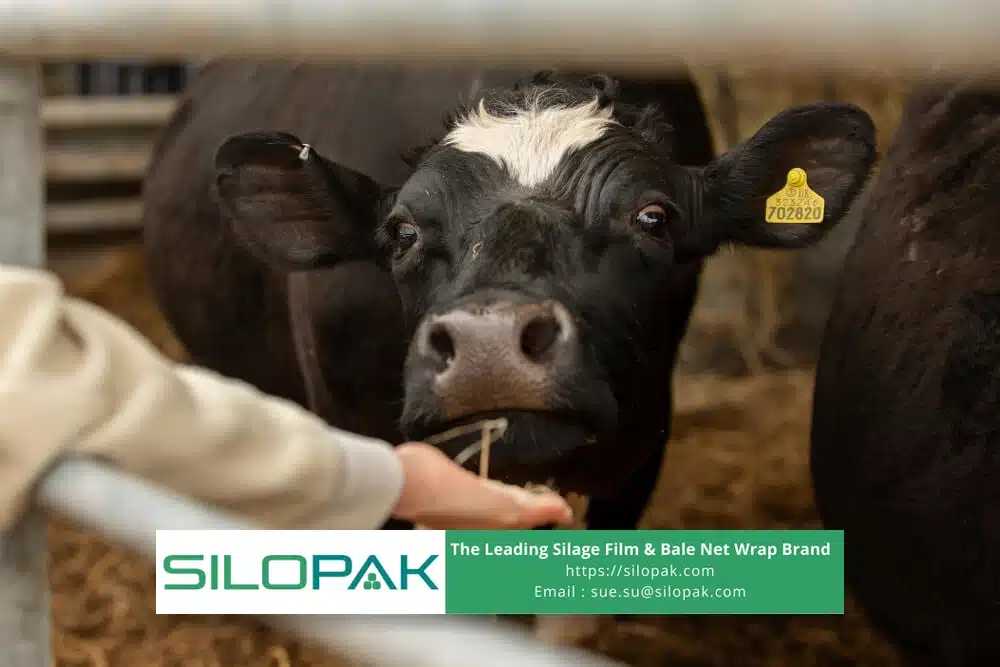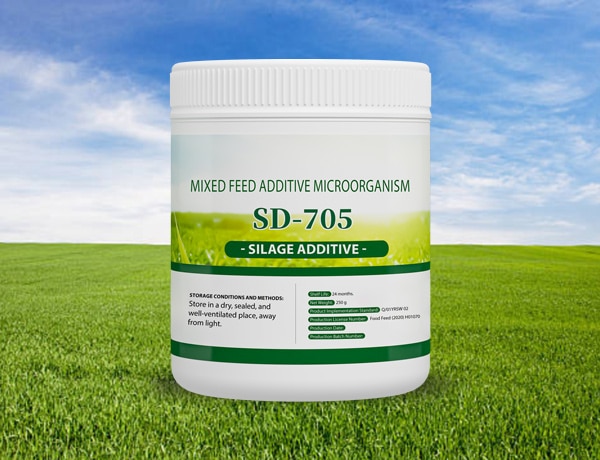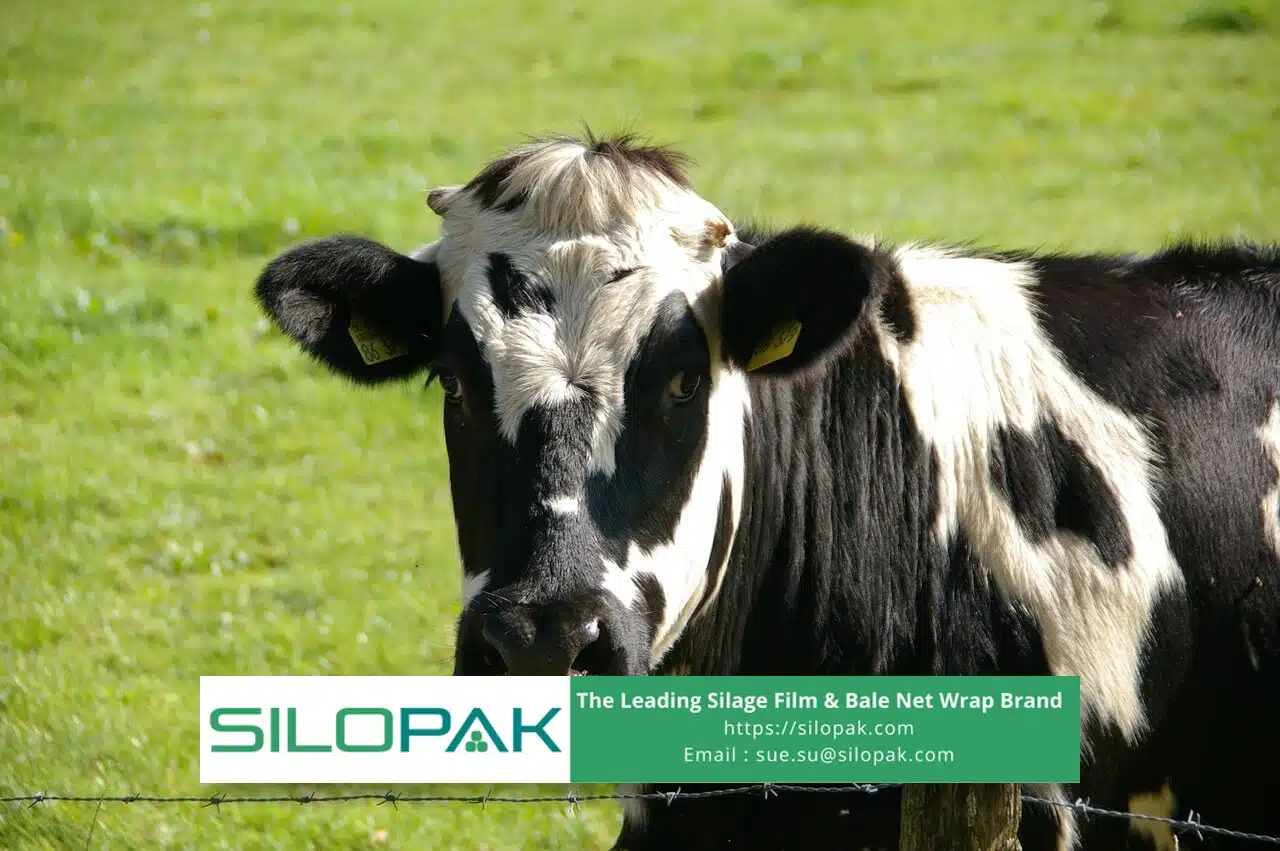
Dairy cows have long been known as the producers of the fresh milk we enjoy. They also play a crucial role in producing cheese, yogurt, and other dairy products that are staples in many diets. But have you ever wondered what dairy cows eat?
Interestingly, dairy cows have a unique and nutritious diet. While we might assume they are only fed grass, their menu is much more complex. Understanding what dairy cows eat is important, as it directly impacts their health and milk yield.
contents
What Do Dairy Cows Eat?
Dairy cows are herbivores, meaning they only eat plants. Their diet consists of two main types: forage and concentrates. Let’s explore what dairy cows eat to produce high-quality milk.
Forage: An Important Source of Fiber for Digestion
One of the primary components in a dairy cow’s diet is forage, which provides the crude fiber they need for digestion. Common types of forage include grass, leguminous leaves, high-fiber vegetation, and crop residues.
Grasses typically include field grass, crop grass, Guinea grass, Bengal grass, Urochloa mutica grass, and Echinochloa colona grass. Leguminous leaves such as Lamtoro, Kaliandra, and Indigofera provide important nutrients like fiber, protein, and energy.
Crop residues, including rice straw, soybean straw, corn stalks, peanut straw, and silage, also make up a large portion of a dairy cow’s diet. These roughages are crucial for maintaining healthy digestion.
Silage Additives: Enhancing Silage Quality

To further enhance the quality of silage, farmers often use silage additives like SD-705 (Silage Fermentation Agent). This product works synergistically with a variety of lactic acid bacteria to produce a large amount of lactic acid and propionic acid substances, which can quickly reduce the pH value and inhibit the growth and secondary fermentation of harmful bacteria such as mold and clostridium. It prevents mold and corruption, and reduces dry matter loss.
Under normal circumstances, the total loss during the fermentation, cellar opening, and material collection stages is about 20%. Adding SD-705 can reduce the loss by 8-15%. Additionally, some aromatic substances produced during the lactic acid fermentation process can increase the aroma of silage and enhance the feed intake of dairy cows. The dominant beneficial bacteria can also improve the digestibility and absorption rate of dairy cows, increasing feed compensation.
Product Name: SD-705 (Silage Fermentation Agent)
Product Type: Mixed feed additive microorganism
Ingredients: Lactobacillus buchneri, Lactobacillus plantarum, Pediococcus pentosaceus, maltodextrin
Total Number of Viable Bacteria Added at Factory: ≥1.1×10¹¹ CFU/g
Concentrates: Nutrient Enhancers for Optimal Milk Production
In addition to forage, dairy cows require concentrates as supplementary feed to meet nutritional needs that forage alone cannot fulfill. Concentrates generally contain higher levels of protein and fat than forage and are formulated to provide the correct balance of nutrients for increased energy.
Common types of concentrates for dairy cows include meals and agricultural by-products. Meals, such as soybean meal, palm kernel meal, and cornmeal, are important sources of plant protein for growth and milk production. Agricultural by-products like tofu pulp, rice bran, and sugarcane pulp provide additional fiber and nutrients.
Minerals, Vitamins, and Water: The Lifeline for Health and Milk Quality
Another essential component of a dairy cow’s diet includes various minerals, vitamins, and water. Minerals like calcium, phosphorus, and salt are crucial for bone health and overall body function. Vitamins A, D, E, and B-complex support the immune system and reproductive health.
Clean, fresh water is also vital for dairy cows, aiding in digestion, regulating body temperature, and influencing milk quality. Dairy cows need ample drinking water daily, especially during hot weather and lactation.
Considerations for Feeding Dairy Cows
The amount of forage given to dairy cows depends on several factors, such as:
- Cow weight: Larger cows require more forage than smaller cows.
- Milk production rate: Cows that produce more milk need more forage.
- Forage quality: Higher-quality forages contain more nutrients and can be fed in smaller quantities.
Similarly, the amount of concentrate fed to dairy cows should be adjusted according to body weight, milk production level, and the quality of the concentrate. This also includes providing additional vitamins and minerals.
Interesting Facts About What Dairy Cows Eat
Dairy cows spend about eight hours a day eating, consuming food slowly and gradually. They also have a unique ability called rumination, where they re-chew previously eaten food (cud) to break it down more efficiently.
A healthy dairy cow can produce 50-100 liters of milk per day. Milk production is influenced by genetic factors and nutritional intake. Additionally, a cow’s diet can affect the flavor and quality of its milk. For instance, milk from cows fed fresh grass in an open field often has a richer taste than milk from cows fed dry feed.
For optimal results, consider using Silopak silage film. Our company specializes in producing silage films designed to maintain the nutritional integrity of silage, mixed feed, hay, and corn. The film enables long-term feed preservation in the agricultural sector, providing flexibility beyond fresh feed for livestock.


